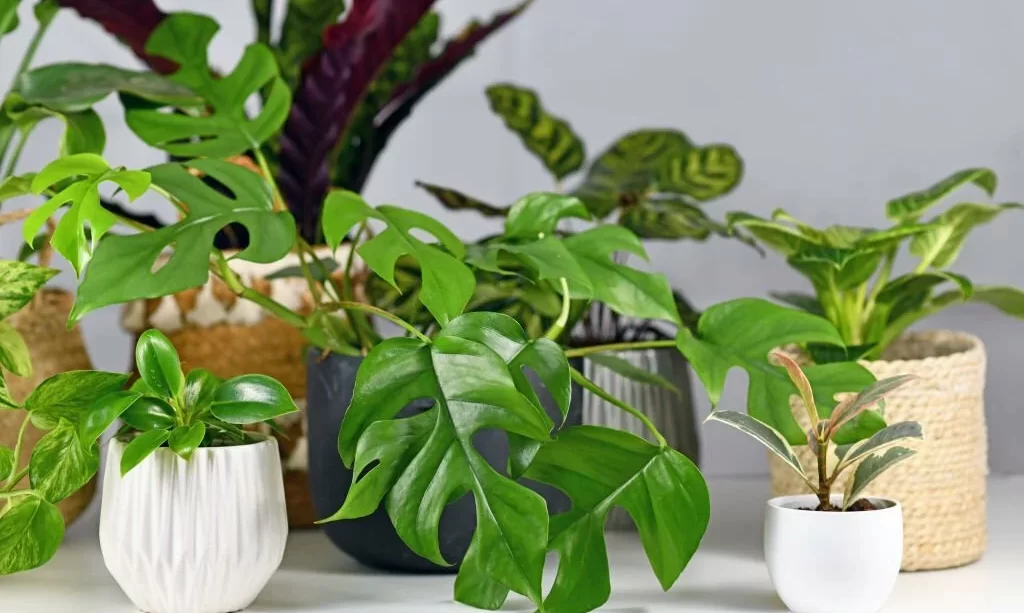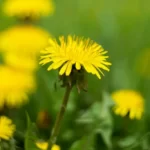Mini monstera, also known as Rhaphidophora tetrasperma, has become a beloved addition to many indoor plant collections for its unique split leaves and easy-care nature. If you’re looking to expand your mini monstera family or share this delightful plant with others, propagation is the way to go. In this comprehensive guide, we will walk you through the art of propagating mini monstera. Whether you’re a seasoned plant enthusiast or a beginner, this step-by-step guide will help you master the skill of creating new mini monstera plants to enjoy. We will explore two primary propagation methods: stem cutting and division, allowing you to choose the technique that suits your preference and expertise.
- 𝐋𝐈𝐕𝐄 𝐈𝐍𝐃𝐎𝐎𝐑 𝐏𝐋𝐀𝐍𝐓 Although it has the nickname, this plant is not a part of the Monstera family. It’s native to Southern Thailand and Malaysia and thrives in high humidity and warm temperatures. It is rare to find it in nature but luckily for you, it grows quickly and has taken quite the liking to the houseplant lifestyle
- 𝐒𝐔𝐍𝐋𝐈𝐆𝐇𝐓 𝐑𝐄𝐐𝐔𝐈𝐑𝐄𝐌𝐄𝐍𝐓𝐒 Adaptable to medium to bright indirect light, this plant flourishes in a range of light conditions, making it a versatile and eye-catching addition to your indoor space
- 𝐖𝐀𝐓𝐄𝐑𝐈𝐍𝐆 𝐆𝐔𝐈𝐃𝐄 Water once every week, allowing the soil to dry approximately 2 inches down for optimal care and health
- 𝐏𝐄𝐓 𝐂𝐀𝐑𝐄 While a captivating plant, this plant is not pet-friendly. Exercise caution and keep it out of reach of your furry friends
- 𝐏𝐋𝐀𝐍𝐓 𝐂𝐀𝐑𝐄 Perfect for beginners, these low-maintenance plants offer an ideal starting point for aspiring plant enthusiasts. Embrace the joy of nurturing greenery with ease
Mini Monstera Propagation
Before you dive into the propagation process, it’s essential to understand the basics of what you’re about to undertake. Here’s what you need to know:
- What is Propagation? Propagation is the process of creating new plants from existing ones. It allows you to reproduce your mini monstera to expand your plant collection or share the joy of plant parenthood with friends and family.
- Why Propagate Mini Monstera? There are several reasons to propagate mini monstera. It can help you achieve a lusher, fuller display of this lovely plant, and it’s a sustainable way to grow more without buying new plants. Additionally, propagating is an exciting way to nurture your plant-parenting skills.
- Methods of Propagation: There are two primary methods for propagating mini monstera: stem cutting and division. Each has its advantages and is suitable for different situations. Stem cutting involves rooting a severed stem section, while division divides the plant into new sections, each with its root system.
Stem Cutting Propagation
Stem cutting is one of the most common and straightforward methods for propagating mini monstera. Here’s a step-by-step guide to successfully propagate mini monstera from stem cuttings:
- Choosing the Right Stem: Select a healthy stem to cut. Look for a stem with several leaves and nodes (small, bump-like structures where leaves and roots can grow). The stem should be free from pests, diseases, or damage.
- Preparing the Cutting: Use clean, sharp pruning shears or scissors to make a clean cut just below a node. Ensure the cutting is at least a few inches long and has one or two leaves. Remove any leaves or nodes from the lower part of the cutting.
- Rooting the Cutting: You can choose to root the cutting in either water or soil. In water, place the cutting in a clear container filled with enough water to submerge the node but not the leaves. Change the water regularly. In soil, plant the cutting in a small pot with well-draining soil. Keep the soil consistently moist, but not waterlogged.
- Care and Maintenance: Place the cutting in a location with bright, indirect light. Monitor the cutting for root development, which can take a few weeks to a few months. Once the roots are a few inches long, you can transplant the new plant into a larger container or your garden.
Stem cutting propagation is a satisfying method that allows you to create new mini monstera plants from a single parent. It’s a fantastic way to share the joy of this unique plant with friends and family or expand your indoor jungle.
Division Propagation
Division is another effective method for propagating mini monstera and is particularly suitable when you have a mature plant with multiple stems. Here’s a step-by-step guide for propagating mini monstera through division:
- Choosing the Right Time for Division: The best time to divide your mini monstera is during its active growing season, typically in spring or early summer. At this time, the plant is putting out new growth and has plenty of energy to support the divided sections.
- Preparing the Plant for Division: Carefully remove the mini monstera from its pot or garden bed. Gently shake off excess soil, exposing the root system. Ensure the plant is adequately watered a day or two before division to make the process easier.
- Separating the Plant into New Sections: Examine the root system to identify natural separations in the plant, where you can divide it into new sections. Use clean, sharp gardening shears or a knife to make clean cuts, ensuring that each section has both roots and leaves. Each divided section should be a healthy, independent plant.
- Transplanting and Aftercare for Divided Sections: Plant the divided sections in their new containers or garden locations with well-draining soil. Provide appropriate care by keeping the soil consistently moist, but not waterlogged. Place the newly divided plants in a location with bright, indirect light to encourage healthy growth.
- OPTIMIZED BLEND: NPK Ratio featuring a balanced 5-2-3 NPK (Nitrogen, Phosphorus, Potassium) formula. Perfect for your monstera houseplant. This liquid fertilizer is expertly tailored to support robust growth and vibrant foliage in Monsteras, Pothos, and Snake Plants.
- PROMOTES STRONG ROOT DEVELOPMENT: Our advanced formula penetrates deep into the soil, delivering essential nutrients directly to the roots, enhancing water uptake and overall plant resilience against environmental stressors.
- EASY-TO-USE LIQUID FORMULA: Designed for convenience, this liquid fertilizer can be easily mixed with water for hassle-free application, ensuring your plants receive the right amount of nutrients with each watering. The concentrated liquid easily dissolves in water, creating a perfectly balanced nutrient solution that evenly distributes essential minerals throughout the soil, providing consistent nourishment with every watering cycle.
- SAFE AND GENTLE FOR FREQUENT USE: Our gentle organic formula is designed to be safe for regular use, providing continuous nutrition without the risk of burning your plants. Ideal for maintaining lush, healthy monstera houseplants all year round.
- ECONOMICAL AND LONG-LASTING: A little goes a long way with our 8 oz bottle, making it a cost-effective solution for Monstera plant enthusiasts. Its concentrated formula means you only need a small amount for each application, lasting you through many watering cycles.
Tips and Troubleshooting
Propagating mini monstera can be a rewarding experience, but it may come with challenges. Here are some tips and solutions to common issues:
- Patience is Key: Propagation takes time. Be patient and give your cuttings or divided sections the time they need to establish themselves.
- Humidity Boost: Maintain a moderately humid environment for propagating plants. You can use humidity trays or misting to increase humidity levels.
- Pest and Disease Control: Monitor your propagated mini monstera for pests and diseases. If any issues arise, treat them promptly with appropriate measures.
Caring for Propagated Mini Monstera
Once your mini monstera cuttings or divided sections have rooted and established themselves, they will require ongoing care to thrive:
- Light: Provide bright, indirect light for your propagated mini monstera. Avoid exposing them to harsh, direct sunlight, which can scorch the leaves.
- Water: Keep the soil consistently moist but not waterlogged. Mini monstera prefers slightly more humidity than some other houseplants, so consider misting the leaves regularly.
- Temperature: Maintain a consistent, warm temperature, ideally between 70-75°F (21-24°C). Avoid exposing your plants to cold drafts.
- Fertilization: Feed your mini monstera with a balanced, liquid houseplant fertilizer diluted to half strength every 4-6 weeks during the growing season (spring through summer).
- Pruning: Regularly prune your propagated mini monstera to shape the plant and encourage bushier growth. This can also help remove any leggy or unattractive growth.
By providing the right care and maintenance, your propagated mini monstera plants will flourish and continue to bring joy to your indoor garden. Whether you’ve chosen stem cutting or division, the reward is a thriving, lush plant that can brighten up any living space.
- 100% NATURAL: Special mixture for the plant also known as Ceriman or Swiss Cheese Plant
- USES: For planting or repotting Monstera houseplants
- Benefits: Aeration to roots, organic humus, excellent drainage, water retention, and nutrient retention
- Ingredients: Peat moss, perlite, coco coir, horticultural charcoal, worm castings, and lime
- Size: 8 quarts (enough for a big 12-inch pot)
Potting and Maintenance
After successfully propagating your mini monstera, potting and maintenance become essential steps in ensuring the continued health and growth of your new plants. Here’s what you need to know:
- Potting: Once your propagated mini monstera has established roots and new growth, it’s time to pot them in their permanent homes. Choose pots with good drainage, and use a well-draining potting mix designed for houseplants. Transplant your cuttings or divided sections carefully, ensuring the root system has enough space.
- Maintenance: Regular maintenance is vital to keep your propagated mini monstera thriving. This includes watering, fertilizing, and monitoring for any signs of pests or disease. Pruning and shaping the plant as it grows can help maintain a healthy, attractive appearance.
Enjoying the Rewards
The joy of propagating mini monstera extends beyond the successful growth of new plants. It’s a rewarding journey that brings several benefits:
- Personal Satisfaction: Successfully propagating mini monstera plants is a satisfying accomplishment. Watching your cuttings or divided sections flourish is a testament to your skills as a plant parent.
- Expanded Greenery: As your propagated mini monstera plants grow, they’ll contribute to a more lush and vibrant indoor garden. Their unique foliage adds character and beauty to your living space.
- Sharing the Love: If you’ve propagated mini monstera to share with friends or family, you’ll have the pleasure of passing on the joy of plant parenthood. It’s a thoughtful and eco-friendly gift that can brighten someone’s day.
Conclusion
Propagation is not only a valuable skill for plant enthusiasts but also an immensely rewarding one. This guide has taken you through the art of propagating mini monstera, exploring the stem cutting and division methods. You’ve learned the importance of understanding the basics of propagation, caring for your newly propagated plants, and maintaining them to ensure long-term health.
As you continue to care for your propagated mini monstera, you’ll witness not only their growth but also the growth of your own plant-parenting expertise. The beauty and vitality these plants bring to your living space, whether it’s your home or workspace, will serve as a daily reminder of your gardening achievements. So, enjoy the journey, embrace the greenery, and relish the rewards of successful mini monstera propagation. Your indoor garden will thrive, and so will your love for the plant world.






